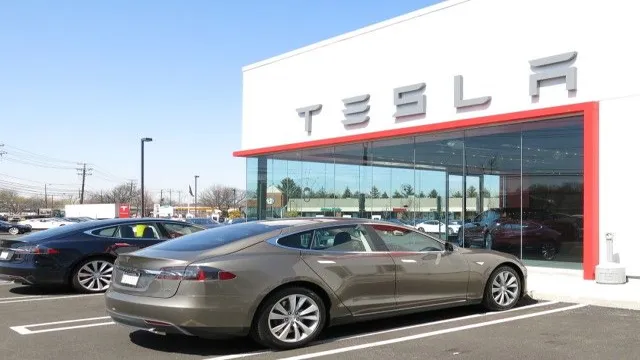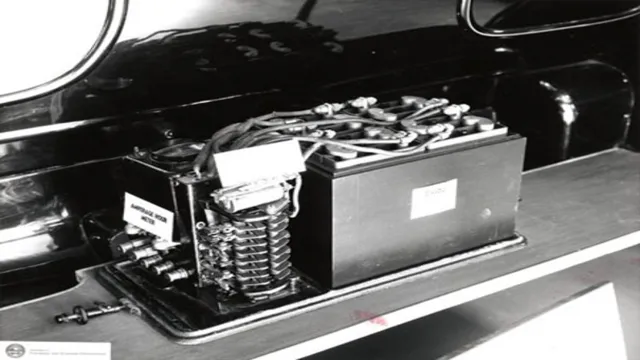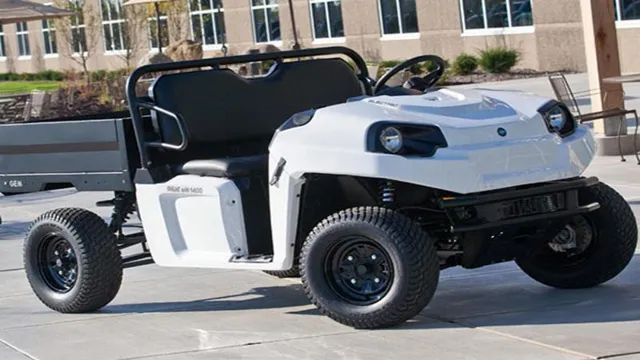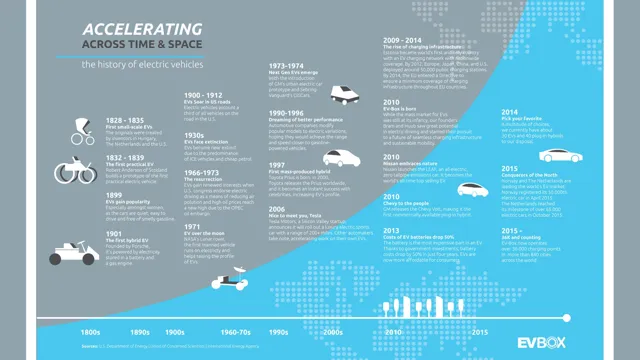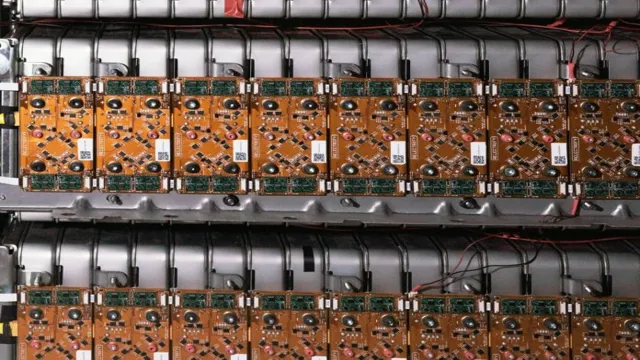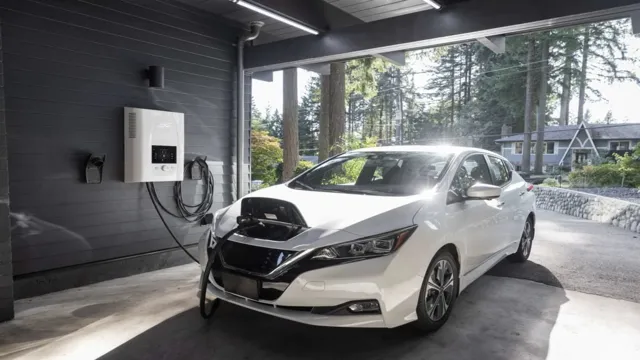Revolutionizing the Roads: An in-depth look at the fascinating History of Tesla Electric Cars
Tesla is one of the most well-known brands in the realm of electric cars. Over the last decade, Tesla has revolutionized the automotive industry with their innovative designs, futuristic technology, and eco-friendly approach. But how did it all start? What’s the history of Tesla electric cars? The story of Tesla began in 2003 when a group of engineers, including Elon Musk, Martin Eberhard, and Marc Tarpenning, set out to prove that electric cars could be just as efficient, practical, and fast as gas-powered cars.
They founded Tesla Motors in California and started working on their first model, the Tesla Roadster. Since its launch in 2008, the Tesla Roadster has been a game-changer in the electric car industry. It was the first highway-capable all-electric car, with a range of over 200 miles per charge.
The Roadster set a new benchmark for electric cars, showing that they can be more than just a niche market and can offer a viable alternative to traditional cars. In the years that followed, Tesla continued to push the boundaries of electric car technology. They introduced the Model S, Model X, and Model 3, each with its own unique features and capabilities.
From the sleek design of the Model S to the falcon-wing doors of the Model X, Tesla has become synonymous with innovation and forward-thinking. But Tesla’s impact goes beyond just cars. The company has also made significant strides in the renewable energy sector with its solar panels and energy storage systems.
Tesla has proven that it’s not just a car company, but a company dedicated to changing the world for the better. In conclusion, the history of Tesla electric cars is one of innovation, perseverance, and a commitment to a better future. Tesla has proven that electric cars can be practical, powerful, and fun, and they continue to lead the charge in the electric car industry.
As we look towards a more sustainable and eco-friendly future, Tesla will undoubtedly be at the forefront of this movement.
Early Beginnings
The history of Tesla electric cars began in 2003, when Elon Musk and several other investors founded Tesla Motors. The company’s mission was to create a mass-market for electric vehicles, which were largely seen as niche and impractical at the time. Their first car, the Tesla Roadster, was released in 2008 and quickly gained a reputation for speed and performance, as well as its all-electric power source.
However, it wasn’t until the release of the Model S in 2012 that Tesla truly became a household name. The Model S boasted impressive range, luxurious features, and a sleek design that won it numerous awards and set new standards for electric vehicles. Since then, Tesla has continued to innovate and expand its line of electric cars, pushing the boundaries of what many thought was possible.
Through its visionary leadership and cutting-edge technology, Tesla has helped shape the future of the automotive industry and shown that electric cars are more than just a passing fad.
Founder Elon Musk’s Vision
Elon Musk’s vision for his companies has always been groundbreaking and ambitious, but it all began with his early beginnings as an entrepreneur. Musk’s first company was Zip2, which provided city guides for newspapers. The company was eventually sold in 1999 for almost $300 million, and Musk used the proceeds to found X.
com, an online payment company that later became PayPal. After the sale of PayPal, Musk set his sights on his current ventures, like SpaceX and Tesla. His vision for SpaceX is to colonize Mars, while his vision for Tesla is to revolutionize the automobile industry by producing electric vehicles and creating sustainable energy solutions.
Musk’s unwavering determination and bold ideas have helped shape the future of technology and entrepreneurship as we know it.
Roadster Release and Success
The Roadster Release and Success marked a pivotal moment in the history of electric cars. Tesla, the company behind the Roadster, was founded in 2003 with the goal of making electric cars more accessible and feasible for the average consumer. The Roadster was released in 2008 and quickly became a game-changing vehicle in the industry.
It was the first production electric car to have a range of over 200 miles on a single charge, and it could reach 60 miles per hour in under four seconds. The Roadster’s success paved the way for the Model S, Model X, and Model 3, which have all been popular electric vehicles in the years that followed. Overall, the release and success of the Roadster was a turning point for the electric car industry, and it proved that sustainable and efficient cars could be both functional and exciting to drive.
Expansion and Innovation
The history of Tesla electric cars is one of expansion and innovation. Starting with their first production car, the Tesla Roadster, the company quickly made a name for itself by developing high-end, stylish electric vehicles that boasted impressive performance. From there, Tesla continued to push the boundaries of what was possible with electric cars, releasing the Model S sedan and the Model X SUV, both of which introduced cutting-edge features like advanced autopilot capabilities and Ludicrous mode, which allowed the cars to go from 0 to 60 miles per hour in just a few seconds.
But Tesla’s expansion didn’t stop there. In recent years, the company has introduced new models like the Model 3 and the Model Y, which are more affordable and geared towards a broader audience. Additionally, Tesla has explored new technologies like solar power and energy storage, paving the way for a future that’s both environmentally sustainable and economically viable.
Overall, the history of Tesla electric cars is one that’s characterized by a commitment to innovation and an unwavering belief in the transformative power of renewable energy.
Model S and X Launches
Over the years, Tesla has continued to expand its offerings and innovate its products. The launches of the Model S and X were key milestones in this growth. The Model S, which was unveiled in 2012, was the company’s first full-size all-electric sedan, and it quickly became a huge success.
Its sleek design, unparalleled performance, and impressive range won over consumers and critics alike. The Model X, released a few years later, was another breakthrough for the company. This all-electric SUV was packed with features and technologies designed to enhance both comfort and safety.
Both the Model S and X have continued to evolve, with new updates and innovations being released regularly. Today, they remain some of the most advanced and sought-after electric vehicles on the market. With their cutting-edge features and superior performance, it’s no wonder that they have become such a hit among environmentally conscious consumers looking for a vehicle that fits their lifestyle.
Autopilot and Self-Driving Technology
As autopilot and self-driving technology continue to expand and innovate, the possibilities seem endless. We’ve come a long way since the first autopilot systems were introduced in the aviation industry. Today, we see similar technology being integrated into cars, allowing drivers to sit back and relax while their vehicle takes control.
The most exciting part is that this is just the beginning. With further advancements, we can expect to see self-driving cars become more common, which could revolutionize the transportation industry and lead to safer roads. However, it’s important to note that this technology is not without its challenges.
There are concerns surrounding safety and reliability, and it will take time to address these issues before self-driving cars become widespread. Nonetheless, the future of autopilot and self-driving technology is bright, and we can look forward to many more exciting developments in the years to come.
Introduction of Model 3 and Mass Production
With the introduction of the Model 3, Tesla expanded beyond the luxury car market and into the realm of affordable electric vehicles. The Model 3 had a starting price of $35,000 and was designed to appeal to a broader consumer base than Tesla’s previous models. Its release was highly anticipated, and pre-orders reached upwards of 400,000 within weeks of its launch.
To keep up with demand, Tesla had to innovate in its production methods, implementing new technologies like the Gigafactory and robotic production lines. This culminated in a massive increase in production, with Tesla manufacturing 5,000 Model 3s per week in 201 This expansion and innovation have continued, with plans for further growth in the coming years.
Tesla’s drive to make sustainable transportation accessible to more people is commendable, and its success thus far is proof of the growing demand for electric vehicles.
Challenges and Accomplishments
The history of Tesla electric cars is one filled with both challenges and accomplishments. Tesla’s mission has always been to accelerate the world’s transition to sustainable energy, and while they have come a long way, it hasn’t been an easy journey. One of the main challenges Tesla faced in the beginning was the lack of infrastructure for electric vehicles.
Charging stations were few and far between, and people were hesitant to invest in a car that they may not be able to charge. However, Tesla persevered and began building their own charging network. They also faced criticism from those who believed that electric cars were not practical or powerful enough for everyday use.
But Tesla proved the skeptics wrong by creating cars that not only rival the performance of gas cars but also have the added benefit of being emission-free. Tesla’s accomplishments include pioneering the use of lithium-ion batteries in electric cars, creating the first fully electric sports car, and developing autonomous driving technology. With each new model and innovation, Tesla continues to challenge the status quo and push the boundaries of what is possible for electric cars.
The history of Tesla electric cars is one of hard work, determination, and innovation, and their accomplishments are a testament to their unwavering commitment to a sustainable future.
Financial Struggles and Resilience
Financial struggles can take a toll on anyone, but the key to overcoming them is resilience. It’s important to acknowledge the challenges that come with financial difficulties, such as mounting debt and limited resources, but it’s equally important to recognize the accomplishments that arise from overcoming these obstacles. Whether it’s finding a new job, prioritizing expenses or seeking financial advice, every step towards financial stability should be celebrated.
As the saying goes, “no pain, no gain.” The same goes for financial struggles. It may be difficult, but with determination and perseverance, one can emerge stronger and more resilient than ever before.
Being able to weather financial storms is a valuable life skill that will serve one well in the long run. So stay committed and focused on the end goal – a financially stable and secure future.
Market Dominance and Awards
When it comes to market dominance, there will always be challenges and accomplishments to navigate. As a company grows and expands its reach, it’s inevitable that there will be others looking to challenge their position. However, it’s essential to stay focused on maintaining a competitive edge and delivering top-notch products or services that keep customers coming back for more.
Awards can be a great way to demonstrate that a company is excelling in their field and standing out among the competition. These recognitions can help build credibility, attract new customers, and differentiate a company from others in the market. Of course, achieving this level of success takes hard work, dedication, and a willingness to adapt and evolve with changing industry trends.
But with the right mindset and commitment to excellence, any company can achieve market dominance and earn the recognition they deserve.
Future of Tesla Electric Cars
Looking at the history of Tesla electric cars, it’s impressive how much the company has achieved over the past decade. When Tesla was founded, electric cars weren’t yet mainstream, and people were skeptical about their practicality and reliability. However, Tesla set out to change that perception with their line of electric cars that offered impressive performance, cutting-edge technology, and sleek design.
Today, Tesla is a household name and a global leader in electric vehicle technology. With the recent unveiling of the Cybertruck and the upcoming Model Y, it’s clear that Tesla is ready to push electric car innovation even further. As we look to the future of Tesla electric cars, we can expect more impressive feats of engineering, game-changing features, and greater accessibility for consumers.
The electric car revolution is well and truly underway, and Tesla is at the forefront of this exciting movement, leading the way towards a more sustainable and environmentally-friendly future.
Conclusion
In conclusion, the history of Tesla electric cars can be summed up in one word: transformational. With their cutting-edge technology, innovative designs, and unwavering commitment to sustainability, Tesla has revolutionized the automotive industry and paved the way for a greener future. From the humble beginnings of the Roadster to the sleek and powerful Model S, X, and 3, Tesla has shown that electric cars are not just a niche market, but a viable alternative to traditional gasoline-powered vehicles.
So here’s to the bold visionaries at Tesla who have blazed a trail for a more sustainable tomorrow. Let’s charge ahead, electrically!”
FAQs
Who founded Tesla Motors, the company that produces electric cars?
Tesla Motors was founded by Elon Musk, JB Straubel, Martin Eberhard, Marc Tarpenning, and Ian Wright in 2003.
What was the first electric car produced by Tesla Motors?
The first electric car produced by Tesla Motors was the Tesla Roadster, which was introduced in 2008.
How does the range of Tesla electric cars compare to traditional gasoline-powered cars?
Tesla electric cars have a comparable range to traditional gasoline-powered cars. For example, the Tesla Model S has a range of up to 402 miles on a single charge.
How does the Tesla electric car charging process work?
Tesla electric cars can be charged at home using a standard wall outlet or a special Tesla charger. Supercharger stations are also available for longer trips, allowing for up to 170 miles of range in just 30 minutes of charging.

